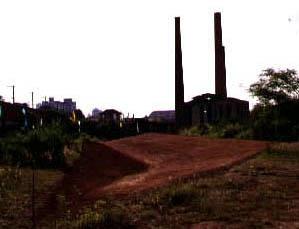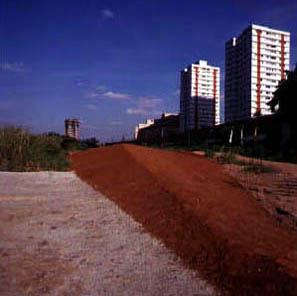|


|

Architects Fernando de Mello Franco and Milton Braga occupied a space of the empty lot that was opened up by the destruction of most of the Matarazzo Industries barns, to produce an intervention in a definitely urban scale. In face of that space's imprecision, deprived of its architectural profile, they engender a new topography. A great extension, about 1,000 feet by 67 feet, is occupied by a volume of rigorous design, partly dug and partly dumped. An ascending slope, a continuous plan and a descending one, of recognizable geometry, paved with construction debris to give it textures and differentiated colors, resulting in a "built topography". A foresight of the city when, like Thebes or Babylon, it will become an archaeological site. An intervention that, for its dimensions, referring not only to the surrounding area, but to the lineal geometry scale of the railway borders and of the city, it refers partly to the principles of land art, mainly as a device for space perception. Just like the earthworks, this topography doesn't offer to the observer on the area a privileged point of view that embraces its configuration. This constructed landscape demands that the visitor walk through her to apprehend its design. Exactly as it happens in the great city. A situation that articulates the lot with the whole surrounding area, forming a wider space: the metropolis.


|
|